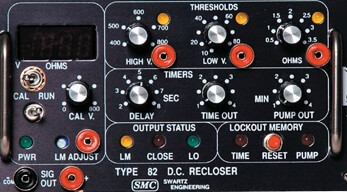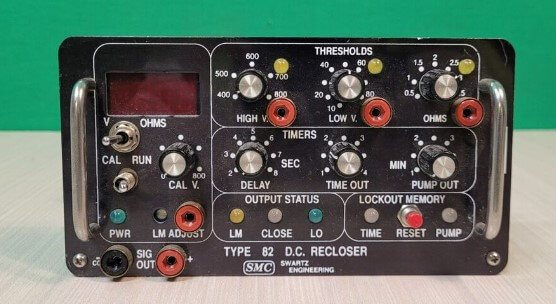
The modern transit industry is a cornerstone of urban development, enabling millions of people to commute safely and efficiently every day. From electric trains and buses to subways and light rail systems, reliable and uninterrupted electrical systems are the backbone of transit infrastructure. However, one of the most critical challenges transit systems face is protecting electrical equipment from overcurrent situations that could cause system failure, expensive repairs, or even dangerous accidents.
Enter Protective Overcurrent Devices—specialized components designed to safeguard electrical systems from overloads, short circuits, and other current-related issues. These devices are not just technical marvels; they are a vital element of modern transit safety and operational efficiency. In this blog, we’ll explore the numerous benefits of using Protective Overcurrent Devices in transit systems and why they are indispensable for maintaining a seamless, secure, and cost-effective transportation network.
What Are Protective Overcurrent Devices?
Protective Overcurrent Devices (PODs) are electrical components that detect abnormal current levels in an electrical circuit and respond by interrupting the flow of electricity. Common types of these devices include fuses, circuit breakers, and relays. In transit applications, PODs are integrated into electrical systems to prevent equipment damage, protect passengers, and ensure compliance with regulatory standards.
Benefits of Protective Overcurrent Devices in Transit
1. Enhanced Safety for Passengers and Operators
Safety is the highest priority in any transit system. Overcurrent events, such as short circuits or overloads, can cause catastrophic failures, leading to fires, equipment explosions, or even electrocution risks. Protective Overcurrent Devices act as the first line of defense, instantly cutting off the electrical flow when dangerous current levels are detected.
By preventing these incidents, PODs not only protect the integrity of the transit system but also ensure the safety of passengers and operators. Whether on a busy subway or a long-distance electric train, these devices provide peace of mind to everyone relying on the system.
2. Prevention of Equipment Damage
Transit systems rely on a complex network of electrical equipment, including motors, transformers, power supplies, and signaling systems. Overcurrent events can severely damage these components, resulting in costly repairs or replacements.
Protective Overcurrent Devices shield sensitive electrical equipment from harm by isolating the affected circuit before damage occurs. For instance, a circuit breaker in an electric bus will trip if the motor experiences an overcurrent, ensuring that the motor remains undamaged and operational after the issue is resolved.
This protective measure significantly extends the lifespan of expensive transit equipment, saving transit operators money and reducing service disruptions.
3. Increased System Reliability
Reliability is crucial for public transit systems. Passengers depend on trains, buses, and subways to run on time, and unexpected delays can lead to frustration and economic losses. Protective Overcurrent Devices contribute to system reliability by ensuring that minor electrical issues do not escalate into major failures.
For example, in rail transit, a short circuit in one part of the power distribution system could potentially take an entire line out of service. With PODs in place, only the affected section is isolated, allowing the rest of the system to operate normally. This localized response minimizes downtime and keeps transit operations running smoothly.
4. Energy Efficiency and Cost Savings
Overcurrent events can cause energy losses due to overheating and inefficiencies in the electrical system. Protective Overcurrent Devices help maintain energy efficiency by quickly addressing issues and preventing sustained power wastage.
In addition, the use of PODs reduces maintenance costs. By preventing damage to electrical components, transit operators can avoid frequent repairs and replacements. The long-term cost savings from reduced equipment downtime and lower maintenance expenses make these devices a financially sound investment.

GET IN TOUCH
In a hurry? Call us at 276-285-3841
5. Compliance with Industry Standards
The transit industry is governed by strict safety and operational standards set by organizations such as the IEEE (Institute of Electrical and Electronics Engineers) and local regulatory authorities. Protective Overcurrent Devices are often a mandatory requirement to meet these standards.
By incorporating PODs into their electrical systems, transit operators ensure compliance with industry regulations, avoid legal penalties, and demonstrate their commitment to safety and quality. Moreover, compliance enhances the reputation of the transit system, fostering trust among passengers and stakeholders.
6. Customizable Protection for Diverse Applications
Transit systems are diverse, ranging from urban light rail to high-speed intercity trains. Each application has unique electrical requirements and challenges. Protective Overcurrent Devices can be customized to suit specific needs, providing tailored protection for different types of transit systems.
For example:
- Fuses offer simple and cost-effective protection for low-voltage circuits in electric buses.
- Circuit Breakers provide robust and resettable protection for high-voltage rail systems.
- Relays enable advanced monitoring and control for complex power distribution networks.
This adaptability ensures that every transit system, regardless of its scale or complexity, benefits from optimal protection.
7. Facilitates Predictive Maintenance
Modern Protective Overcurrent Devices are often equipped with advanced monitoring capabilities that provide real-time data on electrical performance. These devices can detect early warning signs of potential issues, such as minor overcurrent conditions or aging equipment.
With this data, transit operators can implement predictive maintenance strategies, addressing problems before they lead to failures. This proactive approach minimizes service interruptions, reduces repair costs, and enhances overall system reliability.
8. Supports Electrification Initiatives
As cities around the world transition to greener and more sustainable transit options, the use of electric buses, trains, and other vehicles is on the rise. Electrification introduces new challenges in managing and protecting high-voltage systems, making Protective Overcurrent Devices more critical than ever.
PODs play a vital role in the safe and efficient operation of electrified transit systems. They ensure that overcurrent events do not compromise the performance of eco-friendly initiatives, helping cities achieve their sustainability goals without sacrificing safety or reliability.

GET IN TOUCH
In a hurry? Call us at 276-285-3841
Conclusion
Protective Overcurrent Devices are more than just components of an electrical system—they are an essential part of the infrastructure that keeps transit systems safe, reliable, and efficient. From preventing equipment damage to ensuring passenger safety and compliance with industry standards, the benefits of these devices cannot be overstated.
In an era where transit systems are evolving to meet the demands of urbanization, sustainability, and technological innovation, the importance of robust electrical protection has never been greater. Swartz Engineering is proud to contribute to this mission by providing state-of-the-art Protective Overcurrent Devices designed to meet the unique challenges of the transit industry.
Products We Offer
Swartz Engineering strives to provide top-quality products to achieve our customer's needs. Our products include:
- Type 76 DC Relay
- Type 82 DC Relay
- Swartz Engineering’s Type 64 Ground Relay
- Type 32 Reverse Current Relay
- Type 150 DC
- CSM Shield Monitor
- Metal Oxide Surge Arrestors
- Transducers
- MVIS SL Slim-line Contactor
- Fully-tested Power Control Rooms
- Swartz Engineering’s Portable Substations
For nearly half a century, we have proudly led the industry in ensuring safety and efficiency. Swartz Engineering is a trusted family-owned company dedicated to providing top-notch power distribution solutions for the electrical industry. Contact us today!
